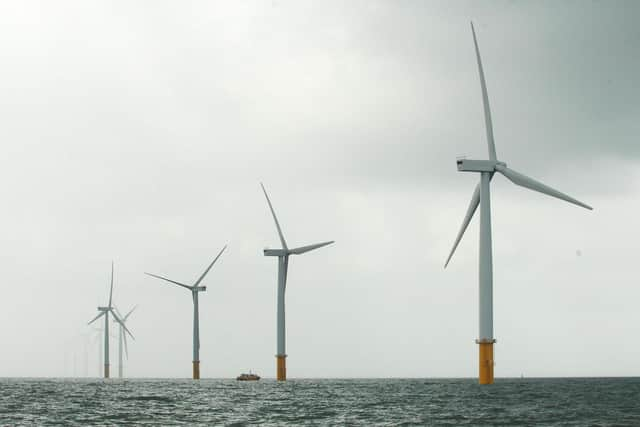'We are planning for the past' - Renewable energy schemes in North Yorkshire to be delayed by up to 12 years
North Yorkshire and York Local Enterprise Partnership (LEP) says some of the larger green energy schemes have been given connection timetables beginning in 2031, with an expectation that 2035 might be more realistic.
It says the delays are largely due to transmission-level issues, with “the large amount of energy from wind installations in Scotland flowing through our region to areas of higher demand in the south of England”.
Advertisement
Hide AdAdvertisement
Hide AdThe LEP has warned the Government while businesses are being held back by a lack of available power, the next couple of years would be “absolutely critical” in determining whether both the region and country as a whole met carbon cutting targets.


The public-private partnership has issued the alert after North Yorkshire Council’s executive pledged to lobby Westminster politicians over the lack of available electricity infrastructure in the county.
A meeting of the council’s executive earlier this month heard concerns about the lack of electricity capacity for the required 3,000 publicly available electric vehicle charging points by 2030 meant it was investigating using solar and hydro-electric solutions to provide power in some places.
Local Area Energy Plans completed in December estimate that low and high-voltage upgrades on that scale would cost about £583m between now and 2040, mostly concentrated in the Hambleton area.
Advertisement
Hide AdAdvertisement
Hide AdAs such, the LEP has has committed to closer working with electricity distribution firm Northern Powergrid to influence its investment plans and help make a clear case for investment to Ofgem, its regulator, to invest in distribution-level reinforcement.
Northern Powergrid said it was investing about £170m a year as part of its decarbonisation targets to 2028, which alongside recent industry changes regarding charges for getting connected “should allow more low carbon technologies to be connected” and on average, at a cheaper cost.
The firm said across North Yorkshire customers are utilising around 55 per cent of available capacity, which was forecast to increase to about 65 per cent by 2029/2030.
While demand for electricity is forecast to double by 2038, the LEP says without such an upgrade, targets on heat pumps, EV chargers, community building decarbonisation, rooftop solar and decarbonised industrial estates will all be missed.
Advertisement
Hide AdAdvertisement
Hide AdLEP chief executive James Farrar said electricity infrastructure was acting as a barrier to growth of key employment sites, such as Dalton Industrial Estate, near Thirsk, while a huge number of renewable energy schemes in the county were being held up while awaiting being connected to the grid.
Mr Farrar said a plan to double the amount of availale electricity, which was scheduled at Dalton Industrial Estate from 2018, would not be implemented until at least 2025, but even after that, the capacity would need to be doubled again to meet the meet the needs of businesses.
The LEP boss is among numerous North Yorkshire voices calling for swift Government action, while Northern Powergrid said there were “national level constraints causing long lead times for generation connections”.
Mr Farrar said: “In many ways it feels like we are always planning for the past. One of the core issues is that we are not allowed to plan for the future. The national grid and Northern Powergrid are legally not allowed to speculate, they can only build for known developments.”
